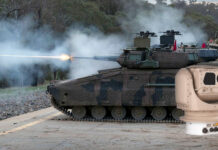Raytheon Company recently completed negotiations with the U.S. Army resulting in finalizing a $1.4 Billion contract modification for system development and demonstration of the Joint Land Attack Cruise Missile Defense Elevated Netted Sensor System (JLENS).
JLENS utilizes a tethered early warning and surveillance sensor installed in an aerostat, positioned at medium altitude. Such system provides over-the-horizon detection and tracking of aircraft, helicopters, UAVs and primarily – the most illusive cruise missiles.
Each aerostat will be elevated to an altitude of up to 15,000 feet for extended periods, carrying radars, Electronic SUpport Measures (ESM) and communication and networking systems to provide wide-area surveillance and tracking of land attack cruise missiles. Such targets may go undetected by surface-based sensors because of terrain masking and line-of-sight locations of targets. These systems will provide persistent, wide-area cruise missile detection and tracking, detecting ballistic missiles at their boost phase, tracking ground targets and providing elevated communications capabilities.
JLENS System testing is scheduled to begin in 2010 with program completion in 2012. Work on the program will be performed at Raytheon sites in Massachusetts, California, Texas and Maryland. Raytheon IDS will develop the fire control radar and processing station. TCOM, L.P., based in Maryland, will develop the aerostat and associated ground equipment.
















